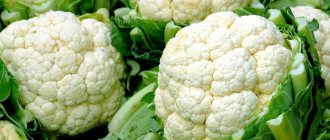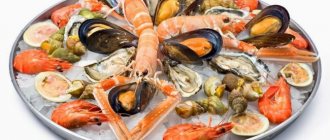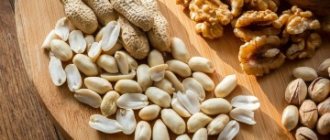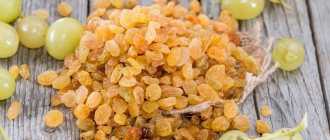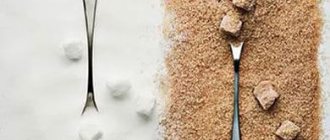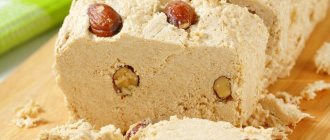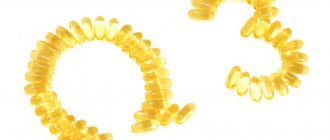Doctors recommend including trout in the diet of a woman who is breastfeeding, 2 times a week. River fish, unlike sea fish, is less likely to cause allergies, accumulates fewer toxins, contains essential acids, high-quality protein and a lot of vitamins. But even despite the rich composition, a nursing mother needs to be careful when consuming trout - it should be introduced into the menu gradually, in small portions, monitoring her condition and the baby’s reaction.
The benefits of fish and seafood during breastfeeding
While breastfeeding, you can eat different types of fish. It is better to give preference to marine inhabitants. They contain more iodine and healthy fats.
Red fish during breastfeeding should be included in the diet at least twice a week. This species includes pink salmon, salmon, chum salmon, and trout. Red fish is the leader in the content of Omega-3 fatty acids. Herring, capelin and mackerel contain them in sufficient quantities. Fatty acids are of great value to the human body:
- normalize lipid metabolism, preventing the appearance of atherosclerotic deposits on the walls of blood vessels;
- reduce the risk of coronary heart disease and heart attack, stroke;
- strengthen the smooth muscles of the vascular walls, normalize their tone, improve peripheral and capillary
- circulation;
- normalize heart rate;
- improve brain function, increase memory and intelligence;
- help strengthen nails and hair, have a beneficial effect on the skin;
- reduce the risk of developing cancer;
- They are a building material for the body’s cell membranes and accelerate the processes of regeneration and repair.
Consumption of fatty fish will benefit not only the mother herself, but also the baby, because essential fatty acids during breastfeeding will enter the baby's body along with milk, which will have a beneficial effect on physical and mental development.
Fish and seafood are the main source of iodine.
This element serves as an integral part of thyroid hormones, and they are necessary for the child for growth and intellectual development. The richest in iodine are flounder, haddock, shrimp and mussels. A nursing woman can also consume seaweed to meet her daily iodine needs.
For the proper formation of the musculoskeletal system and the functioning of the nervous system, the baby needs vitamin D and calcium.
To maintain the concentration in breast milk, it is enough for the mother to eat 200 g of red fish 2-3 times a week. This must be done in the autumn-winter period, when there is not enough ultraviolet radiation in the surrounding space.
Vitamin D
necessary for the baby for the growth of teeth and bones, the formation of neuromuscular conductivity (restores the myelin sheaths of the nerves), and for the mother for the prevention of osteoporosis, slows down the growth of tumors in the body.
Seafood contains minerals and trace elements:
- phosphorus;
- zinc;
- cobalt;
- copper;
- sodium;
- magnesium;
- manganese;
- potassium.
phosphorus content
, it, together with calcium, is included in the structure of bones and teeth, participates in protein, fat and carbohydrate metabolism. It is part of RNA and DNA molecules, a catalyst for energy processes in the body.
When breastfeeding, you can consume fish by-products: caviar, milk, liver. Caviar contains protein
, which is absorbed faster and easier than proteins from meat and dairy products,
fat-soluble vitamins E and A, D
in high concentration,
folic acid.
Consuming this product will help increase the level of hemoglobin in the blood and is an excellent means of preventing anemia.
Pollock and cod liver contains vitamin A (retinol)
, which is part of the rhodopsin molecule (the pigment responsible for night and twilight vision) and improves visual function.
Retinol
is an antioxidant, stimulates the synthesis of collagen fibers, eliminates inflammatory processes in tissues and enhances their regenerative abilities.
Vitamin A
is a natural immunostimulant, increases the protective functions of mucous membranes, the activity of leukocytes, and improves local immunity.
The most nutritious milk is from salmon and sturgeon. In addition to protein and fatty acids, they contain protamine
, these include
essential amino acids, glycine
, necessary for brain activity,
immunomodulators (sodium salt of DNA).
Fish is a source of easily digestible protein; a 250 g portion of fish fillet can fill your daily requirement for this substance.
Features of red fish
- pink salmon;
- salmon;
- salmon;
- trout.
All of them contain many vitamins and microelements that have a beneficial effect on the functioning of our body. This means that it will also benefit nursing mothers. And through milk, these beneficial substances will be transferred to the baby, who will also receive the necessary dose of strengthening vitamins. Red fish contains the following elements:
- vitamins of groups A, B, D and E;
- biologically active fats with a special chemical composition. It helps not to gain excess weight, but to get the necessary dose of fat for the nursing body;
- complete protein, which is well absorbed by infants, and again prevents mothers from gaining weight;
- amino acids important for any organism (lysine, valine, leucine, arginine and others);
- high content of more than 11 different micro- and macroelements that strengthen bones, promote the growth of hair, nails and have a positive effect on the processes of the body as a whole (iron, calcium, potassium, sodium, magnesium, selenium, phosphorus, copper and so on);
- extractive compounds that increase the secretion of gastric juice, thereby improving the child’s digestion.
In addition to all of the above, red and other fish contain a sufficient amount of water to help the body quickly absorb vitamins and macroelements.
Fish dishes for nursing mothers
- Pollock baked with vegetables: cut zucchini, tomato, broccoli. Place the vegetables on a sheet of foil, place boneless pollock fillet on top, add salt, and wrap the foil tightly. Bake for 20 minutes at 180-200 degrees.
- Steamed salmon with potatoes in a slow cooker: wash the fish, rub with salt and lemon juice, cut the potatoes into cubes. Pour 1 liter of water into the multicooker bowl, place the salmon and potatoes in the steaming container, close the lid tightly and cook for 30 minutes using the “steam” program.
- Pink salmon soup: rinse the pink salmon, add water and cook for 30 minutes, skimming off the foam. Chop the potatoes, onions, herbs and add to the fish, cook until tender.
During pregnancy, a woman tries to compose her daily menu from the healthiest foods, because for the good development and growth of her unborn son or daughter, she needs as many vitamins and nutrients as possible. You need to pay no less attention to your diet after childbirth; it is at this time that a small body needs tasty and healthy milk. A nursing mother should not conduct experiments on her own or listen to the advice of other mothers - what is useful for some may have a negative impact on others.
Some foods can only harm the baby. Along with milk, not only nutrients, but also harmful ones can enter the child’s body. What dishes are recommended for a young mother to eat? First of all, there should be fish on the table. On store shelves you can find fresh, smoked, dried, frozen. Dried is considered one of the most delicious. Is it okay for a nursing mother?
It is difficult to determine the exact calorie content of dried fish, because various factors influence it - variety, cooking methods. If we talk about averages, then the kcal per 100 grams of the finished product will be slightly more than 270. It also contains:
- 3 g carbohydrates;
- 6 grams of fat;
- 52.5 grams of protein.
Dried fish is rich in calcium, which is so necessary for the human body. This most often applies to small fish, because they can be eaten directly with the bones.
Dried fish also contains large amounts of phosphorus and fluorine. Some doctors recommend consuming this product for cancer patients, because fatty acids, which are abundant in some fish, can reduce the number of cancer cells.
Drying fish the classic “lazy” way
Fish recipes
The authors of the “Cookbook for Young Mothers” offer their solution to the question of whether a nursing mother can fish. Their recipes allow you to cook it tasty, healthy and safe. And most importantly - in a hurry.
Rassolnik with hake
This quick first course will please everyone in your family.
Ingredients:
- hake - 300 g;
- water - 2 l;
- potatoes - 4 tubers;
- pearl barley - 4 tbsp. spoons;
- onions, carrots - 1 pc.;
- pickled cucumber - 2 pcs.;
- vegetable oil;
- salt;
- Bay leaf.
Preparation
- Soak the cereal overnight.
- Place fish in cold water and boil for 30 minutes.
- Add cereal, prepared cucumbers, and potatoes to the broth.
- Sauté onions and carrots and add to broth.
- Add spices, salt.
When serving pickle with hake, sprinkle it with fresh herbs.
Cod with apples
A simple and original dish for which any low-fat fish is suitable.
Ingredients:
- cod - 400 g;
- apples - 2 pcs.;
- butter - 50 g;
- onion - 1 head;
- sour cream - 2 tbsp. spoons;
- salt.
Preparation
- Peel the apples and cut into strips or slices.
- Chop the onion.
- Heat the butter, simmer the apples and onions.
- Rub the fish with salt and add to the stewed dressing.
- Simmer covered for 30 minutes.
When serving, sprinkle with sour cream. The dish can be eaten chilled.
Steamed herring
This technology allows you to steam absolutely any fish. It will turn out juicy and tender.
Ingredients:
- fish carcass;
- salt;
- onion - 1 head;
- parsley.
Preparation
- Place the carcass in a saucepan and fill halfway with water. Add some salt.
- Add onion and parsley after boiling water.
- Cook covered for 20 minutes.
Any cereal porridge or potatoes are suitable as a side dish for this fish.
When the baby grows up, pediatricians answer positively the question whether a nursing mother can have lightly salted salmon or other fish salted in the usual way. Include it in your diet three months after giving birth. Eat the fish that you salted yourself to be sure of its quality.
Boiled or stewed carcass can be consumed from the very birth of the baby. Fried foods are also not prohibited, but it is better to try them later, after four to five months. And when eating, remove the fatty crust from them.
Fish meat is an essential food product that should be included in every person’s diet. But many young mothers doubt whether fish is safe when breastfeeding.
Photos:
Pros and cons of use
The benefits of eating fish are obvious - the baby will receive a large amount of calcium, which promotes growth and overall development. Meat is heavier for the stomach of a nursing mother, but fish is not only easily digestible, but also has a strengthening effect on the cardiovascular system.
A large amount of protein also has a beneficial effect on the female body, which is exhausted after childbirth. The kidneys especially need restoration. Thanks to protein, they will quickly return to normal.
It is worth noting the negative aspects of the dried product. Excess salt partially disinfects the fish, but still many harmful components remain, which can negatively affect the small organism. Salt tends to change the taste of milk in a nursing mother, as a result of which the child may even refuse this method of feeding.
Salt can also clog the thoracic ducts. What does it mean? There will be much less milk, and in many cases it disappears altogether.
How to dry fish
Contraindications
It is especially dangerous for a nursing mother to consume dried fish if her body is prone to allergic reactions to food. As a result, the baby can get numerous problems, including food poisoning.
Also, excess salt in the product causes severe thirst. Mom will have to drink a lot of water, which will not contribute to the nutritional value of the milk. The baby will also begin to need extra fluid, which can cause restlessness, crying, and sleep disturbances.
In such cases, fish dishes should be consumed after the child reaches six months. Even then, more than 30 grams of product per day is not recommended. After each meal, it is necessary to observe the reaction of the child’s body.
Before you start eating dried fish, you should definitely consult your doctor. Only he can recommend what types of product to start with and determine the exact amount that can be allowed to a nursing mother. It is especially necessary to take such safety measures for mothers who had any problems with consuming this product in any form before pregnancy.
Also, mothers who have problems with the gastrointestinal tract should not use the product. Salty foods can cause severe pain and heartburn. Here you cannot do without the help of a doctor; you will have to undergo a course of treatment.
Dried fish
Harm
- You should not eat raw fish or even lightly salted fish , especially for breastfeeding mothers and babies. This can lead to a severe allergic reaction, and the most dangerous thing is poisoning and infection with various infections.
- It is worth limiting your consumption of exotic fish. Because they may contain high mercury content. Such fish include shark, cod, and tuna.
- It is better to give children processed fish, for example in the form of cutlets. If you eat fish in pieces, bones may get in.
conclusions
From all of the above, we can draw clear conclusions - it is better not to include dried fish in the daily menu for the first few months after childbirth, even if the nursing mother feels great. After all, first of all, you need to think about the health of the child.
It is better to start eating dried fish during lactation only six months after giving birth. You should not buy sea water - river water contains much more useful and safe substances. It is better not to take small fish for now, but try small portions of dried meat of white varieties.
If a child develops suspicious symptoms, it is necessary to urgently seek medical help. Self-medication can only harm a weak child’s body.
By paying special attention to her diet, a nursing mother can influence the health and well-being of her baby. Healthy foods, moderate consumption, and careful monitoring of the child’s reaction to one or another component reduce the risk of harming the little body.
Video: Salted fish
It is important for every mother to know what kind of fish is acceptable while breastfeeding. The product is incredibly tasty, which is why it is very popular in every region of our country. It is important to prepare, select and serve it correctly. Only in this case will it have a positive effect on the woman’s body during lactation.
Fish products are usually classified as dishes of animal origin. Nutrition experts recommend eating them twice a week. It should be noted that the protein included in the composition is radically different from meat and dairy. The dish is ideal for a nursing mother because it is low in calories and is easily digested in the digestive system.
Lightly salted salmon and its effect on the body of a nursing mother
Salmon is a red fish, the meat and caviar of which have been considered gourmet foods since ancient times. The basis of the vitamin and mineral composition of salmon is vitamins A, B, C, D and PP, minerals (calcium, iodine, iron, magnesium, selenium, phosphorus, chromium, chlorine, zinc, sulfur, nickel, etc.) and many others useful substances.
The most important element in salmon is Omega 3. Red fish is superior to white fish in its high content of this fatty acid. Thanks to this substance, excess cholesterol does not accumulate in the blood. It helps strengthen blood vessels. Beneficial for a woman’s nervous system, relieves nervous excitement, improves memory.
Among the many beneficial effects of salmon on the human body, the following stand out:
- Beneficial effect on the digestive system.
- Strengthening the musculoskeletal system due to the vitamin D content.
- Improved liver function.
- Positive effect on the circulatory system. Strengthening blood vessels, normalizing blood flow.
- Help prevent and control infections. Strengthening the immune system.
- Increasing nervous resistance to stress, depression, improving concentration and memory.
- Acceleration of metabolism.
- Thanks to vitamin A in the composition, it has a positive effect on visual acuity.
- Maintains skin elasticity and attractiveness.
Main Product Features
Can a nursing mother eat fish? Which product is best to choose among the wide variety that is presented in any store? A nursing mother can not only eat fish, but also need it. With its help, all the necessary minerals and trace elements enter the body. You can easily restore your health after childbirth and pregnancy.
Buy fish only from a trusted supplier
- Mommy will be able to provide her body with the necessary amount of fatty acids. Herring and salmon must certainly be present in her diet. The Omega-3 component is used not only to create external attractiveness, but is also necessary for proper regeneration and tissue repair. With its help, you can normalize all metabolic processes and hormone synthesis within a short time. Fatty acids are directly involved in obtaining benefits from other foods.
- Children under one year old need minerals to create conditions for proper growth and development. Fish dishes contain large quantities of calcium and selenium. These components are directly involved in the formation of the cardiovascular system. For proper functioning of the thyroid gland, iodine is needed, which can also be obtained from fish.
- Fish is allowed to be eaten because it contains a large amount of vitamins and minerals. They are directly involved in the formation of the baby’s nervous system. The components are used to create a high-quality immune system, which in the future can protect the child from a large number of infections and viruses. Joints and bones are formed with the participation of elements contained in seafood.
A nursing mother should eat regularly. The same scheme must be followed during pregnancy. In this case, the baby’s body will be prepared in advance and adapted to all components, so it will normally tolerate their inclusion in the mother’s diet.
A steamed dish will be beneficial
Product Features
Among the huge variety of seafood, a nursing mother is not too limited in her choice. Eating fish during breastfeeding is not only possible, but necessary. After all, it contains valuable substances necessary to maintain a woman’s health.
- Unsaturated fatty acids. These substances are found only in varieties of fatty fish, which is why salmon, salmon, and herring are especially important in the diet of a young mother during breastfeeding. Omega-3 and 6 fatty acids are responsible for external attractiveness, as they participate in the synthesis of skin tissue and its regeneration. However, they also perform more responsible work: they normalize metabolism and participate in the synthesis of hormones. Thanks to fatty acids, which a person can only get from food, his body's systems work correctly.
- Minerals. Fish during breastfeeding will become a supplier of essential minerals: calcium, selenium and phosphorus. They participate in the formation of the skeletal system, skin and vessel walls. Marine fish are rich in iodine, which protects the young mother’s body from thyroid diseases.
- Vitamins. Seafood contains a full range of B vitamins. Fish contains pantothenic acid, riboflavin, pyridoxine (vitamins B1, B2, B6, B12), which are involved in the functioning of the nervous system and hematopoiesis. It also contains vitamins A, C, E. They create conditions for the body’s immune defense, the functioning of the bone and joint systems, and skin regeneration.
Fish should be eaten regularly. If a woman adheres to this rule during pregnancy, problems during lactation will most likely not arise. The baby’s body is already familiar with fish dishes, so it will tolerate them normally.
Risks and dangers during lactation
Like any protein product, fish during lactation can cause allergies in the baby. When consuming it, adhere to the basic rules for introducing new components of the diet.
- Consume only those varieties that you ate during pregnancy. In this case, fish when feeding a newborn is unlikely to cause an allergy, so it is allowed not to change the diet in the first month after the birth of the baby. If a reaction occurs, remove the product from your diet and try it again in the second month.
- Introduce new varieties carefully. No matter how safe and healthy red fish may seem when breastfeeding, it can cause allergies in the baby. To reduce the risk of a dangerous reaction, do the following: Try a piece of fish, take a break for two to three days. If there are no rashes on the skin, try the same piece again. The peculiarity of the action of allergens is that after the first use of the product they do not appear. But each subsequent “experiment” makes the allergic reaction more pronounced.
- Diversify your seafood diet. If you do not notice any unpleasant reactions from your baby to different fish, there is no reason to limit it in your diet. Eat any one you like.
Buy high-quality, fresh carcass. It preserves valuable and useful substances. After cooking it will be juicy and tasty. A frozen product will not please you with its rich taste.
Possible risks of use
Any protein is a possible provocateur of an allergic reaction. You can avoid a negative situation only if you strictly adhere to the basic rules of use. Nutritionists recommend constantly following them:
- Mommy can eat the types of seafood that she ate during pregnancy. This rule should be strictly followed in the first month after the baby is born. If a negative manifestation of the product occurs, you can try it next time no earlier than in a month.
- It is important that your child is kept safe at all times, so it is important to be fully aware of all possible risks. For example, you should not eat red fish, since it often causes an allergic reaction. To reduce the risk, you should eat just one small piece and then pause for a couple of days. If there is no allergy, you can continue the experiment, but now you can double the portion.
- It is recommended to make the most varied fish menu possible. The main thing is that the baby does not experience a negative reaction during its use. A woman will be able to create a menu depending on her individual preferences.
Nursing mothers are allowed to eat only carcasses that have excellent external characteristics and have recently gone on sale. It is also required to follow all the cooking rules, in which case you will enjoy not only the taste, but also enrich the body with all the necessary components.
How to introduce fish into your diet
If during pregnancy and long before the new mother ate fish dishes without restrictions or negative consequences, then it is also possible to eat fish after childbirth. But when feeding your baby, you should adhere to several rules:
- During the first months, eat boiled or steamed fish;
- at the first dose, you should limit yourself to a small piece (no more than 50 grams), watch the child and only if there is no rash or redness, continue use after a couple of days, increasing the portion;
- if the baby refuses to latch on or eating fish leads to gastrointestinal upset or colic, then the ingredient is removed from the mother’s menu and reintroduced after a few months;
- When introducing a product into a permanent menu, at first it is better to eat white varieties of river fish or fish broth, then add red types.
It turns out that the positive effect of fish products on the female body when feeding a child is much higher than the possible risks. The only point is that a nursing mother should choose the right carcass when purchasing and prepare it accordingly, then the use of such a valuable product will bring maximum benefits for the health of the newborn.
Basic criteria for choosing a useful product
Can a nursing mother fish and what type is best to choose? Nutritionists and breastfeeding specialists advise choosing hake, cod, pike perch, and pollock. A large assortment of useful components is found in the sea tongue.
You can eat mackerel and flounder no more than once a week. This variety often causes an allergic reaction in children, so their regular presence on the menu is not acceptable.
Red fish often causes allergies when breastfeeding. You can eat it, but you should follow a careful pattern. At the same time, nutritionists recommend eating salmon regularly, since it is necessary for the proper formation of the baby’s internal organs. Refusal should follow if there are red rashes on the skin. These are the first signs that food cannot be digested normally in the gastrointestinal tract.
Red fish is a strong allergen
Feeding the baby should cause the woman to refuse fish that were caught in the ocean. Recent scientific studies have confirmed that it contains high levels of mercury. It negatively affects not only the mother’s body, but also the child’s.
It is impossible to prepare a dish in such a way that mercury completely disappears from it. Fortunately, today it is difficult to find this variety in a regular supermarket. Of these, only tuna is very popular. Even with this negative factor, you can still eat it once a week.
Contraindications for use
Trout in the following form is strictly prohibited in the diet of a nursing mother:
- Raw, salty, with spices. Trout is quite often infected with parasites and, if you eat it without heat treatment, the risk of transferring them to the body is extremely high. Parasite eggs do not pass into breast milk, however, a woman infected with them can infect her baby through poorly washed hands.
- Smoked, dried, pickled. This fish contains a lot of preservatives, artificial food additives and salt, which can cause allergies, as well as problems with the gastrointestinal tract in the baby.
- Canned trout in jars. Any canned food during breastfeeding is potentially dangerous; moreover, such a product contains very few vitamins and microelements.
- You can start enjoying trout caviar only after breastfeeding is complete. The preservative formaldehyde (E240) is often added to it, which is a strong poison that easily passes into breast milk.
You should not eat trout head until you stop breastfeeding - it contains the most harmful substances, including mercury.
You can eat frozen fish, but its composition is poorer. It is better to choose fresh fish from a trusted supplier who has all the documents confirming its quality.
Under no circumstances should you buy river fish from trays on the street. It may not only be stale, but also contain mercury, which, when entering the child’s body through milk, can cause problems in the development of the child’s brain.
The main contraindications to a complete ban on the consumption of trout in the menu of a nursing mother may be the following problems:
- allergic reactions in mother or baby;
- problems with the baby’s digestive system (fatty fish can worsen the condition);
- mother's peptic ulcer;
- liver problems in mother or baby.
If you include trout in your weekly diet during pregnancy, the risk of allergies in your baby is significantly reduced.
Basic principles of preparing fish dishes
In the first month after the baby is born, it is best to boil or steam river fish. A little later, you can add a version baked in foil to your diet. You can use a cooking option that involves getting cutlets or meatballs.
What fish should you avoid while breastfeeding:
It is best to fry or boil fish that are typical for your region. Summer is an unfavorable period for its consumption. At this time, the freshness of the fish is called into question, since under the influence of high temperatures it quickly loses its properties. You should not buy salted fish on which you can see a yellow coating or damage to the integrity of the skin. A high-quality sample always has a uniform color and texture.
How to cook fish properly
Can a nursing mother have fried fish? Preference should be given to the river version, which spent at least 15 minutes in the pan. During this period, harmful components will be completely destroyed. Vitamins and minerals will remain in the required condition, so they will help the body function correctly.
Fish for a child is an important product that has a number of beneficial properties. You should choose it very carefully and adhere to the basic rules of preparation.
When purchasing, you should pay attention to the appearance and smell. Salted fish is good for the body. When breastfeeding, it is best to opt for the lightly salted version. In this case, excessive swelling will be avoided. The salty option is undesirable. It is best to consult a breastfeeding specialist about its use.
As a cooking mode, it is best to choose boiling, oven cooking or steaming. Unfortunately, not everyone will like the taste characteristics of such a dish. However, only useful components will be absorbed by the body. In this case, the likelihood of an allergy in the baby will be reduced to zero. It is also better to leave dried fish for later.
Today, in any store you can find a wide range of seafood. They are incredibly tasty, but not all of them will be beneficial to the body of a nursing mother. It is necessary to refuse exotic foods, since they most often cause a negative reaction in the baby’s body. The choice always remains with the parents. They have the power to do everything for the health and happiness of their baby.
Fish is the most valuable food product for humans. And a nursing mother’s diet must include fish dishes. But is all fish allowed during breastfeeding? Let's consider what kind of fish can be consumed during breastfeeding, in what quantity, and whether there are contraindications for consuming this product.
Cooking methods
In modern cooking you can find many recipes for preparing fish both for the dietary menu and for your usual lifestyle. The most commonly used preparation options are:
- fried fish - not recommended for breastfeeding women. After frying, it no longer has any beneficial properties; in addition, harmful carcinogens from overheated oil can reach the child, which can cause colic or indigestion.
- boiled fish is the safest, even healthiest way of cooking. Almost all nutrients and valuable microelements are preserved in this form. The boiled portion can be served with vegetables, with minimal spices.
- smoked fish - you don’t even have to consider it. This category of products is prohibited for the diet of a nursing mother. This cooking method leaves the product partially raw, and insufficient heat treatment can infect the human body with various microbes. And with this method of cooking, much less nutrients remain than even when fried.
- dried, dried or salted fish - primarily not recommended for breastfeeding due to the high salt content. This product has a negative effect on milk, promotes the formation of swelling, and prevents the removal of fluid from the body.
- stewed, steamed or baked are also ways of preparing fish that are acceptable during breastfeeding.
The benefits of fish for a nursing mother
- Vitamin D contained in fish allows calcium ingested in food to be completely absorbed in the baby’s body;
- Fish is easier to digest than meat, and thanks to this it normalizes stool and has a beneficial effect on the intestines of a nursing mother;
- Essential omega-3 acids, which fish is rich in, strengthen the cardiovascular system of both mother and child;
- Fish protein is perfectly absorbed by the body, and it creates a barrier to the formation of salts of lactic acids and uric acids, which has a beneficial effect on the mother’s kidneys, which after childbirth rearrange their function into a “pre-pregnancy” mode of operation and need additional protection.
Contraindication to eating fish during breastfeeding
There may be a maternal predisposition to food allergies. If she has previously had allergic reactions to any type of food, it is worth postponing the introduction of fish into food during breastfeeding. In this case, you should start eating fish six to eight months after birth, 20-30 grams per meal.
Now let’s look separately at the different types of fish that are most popular and most often on our table, and evaluate the benefits of each of them for a nursing mother.
Types of fish and features
1. Red fish
(
salmon, pink salmon, trout, salmon, etc.
) is a champion in the content of healthy omega-3 fatty acids. Red fish is allowed for consumption during breastfeeding, but in moderation, because it is a fairly allergenic product.
2. Salted fish
By definition, it contains a large amount of salt, which can lead to an imbalance in kidney function and the appearance of edema.
Therefore, salted fish during breastfeeding is not recommended
for breastfeeding mothers.
Note to moms!
Hello girls) I didn’t think that the problem of stretch marks would affect me too, and I’ll also write about it))) But there’s nowhere to go, so I’m writing here: How did I get rid of stretch marks after childbirth? I will be very glad if my method helps you too...
4. Dried fish
in most cases it is soaked in salt, which disinfects it, but is still unsuitable for food for a nursing mother. Eating too much salt can cause it to accumulate in the breast ducts and change the taste of the milk, which can lead to your baby refusing to breastfeed. Dried fish is not the best product for breastfeeding, so take care of your baby’s health and avoid using it during lactation.
5. River fish
contains a lot of bones, but this does not deprive it of its beneficial qualities. If you steam this fish or make broth from it, this is an excellent dish for a nursing mother. River fish is healthy during breastfeeding, but only when it is cooked correctly and without the use of oil.
6. Fried fish
contraindicated for use. Since frying takes more than 15 minutes, this time is enough for all the beneficial substances to be destroyed during high heat treatment in oil.
7. Dried fish
Its nutritional value is similar to dried. Of course, when prepared naturally - salting and drying, both omega-3 acids and protein are preserved, but the increased salt content negates all the benefits for a nursing mother. Therefore, dried fish is temporarily prohibited during breastfeeding.
Remember that fresh and chilled fish has the greatest value, but frozen fish already loses half of its beneficial qualities.
The health of you and your baby depends on the organization of your diet during breastfeeding. Include boiled or stewed fish in your diet once or twice a week within 50 grams
. This will be enough to provide the body with everything useful that is found in fish.
Fish is a valuable and necessary product in human nutrition. It has a positive effect on the condition of the bone skeleton, stimulates memory and brain activity, and fills the body with the necessary vitamins and minerals. Fish is digested faster and absorbed more easily than meat. It normalizes material metabolism and improves digestion. Boiled fish is included in the diet menu.
However, not every type of this valuable product is safe for breastfeeding, because some foods can cause a negative reaction in an infant. The child may develop allergies, increased flatulence, colic, pain in the stomach and abnormal bowel movements. To avoid such problems, it is important to carefully select your diet and follow the rules for introducing new products to the menu.
The most healthy and safest varieties are low-fat varieties, which include pike perch and pollock, river perch and hake, and haddock. A detailed list of permitted fish varieties during lactation can be seen. And then we will find out whether a nursing mother can eat salmon and trout.
Types of fish
Low-fat river and sea fish are useful for nursing women and infants, but it is important to prepare the product correctly. It is best to boil, bake or stew, or steam fish. You can also include fish broth and soup in your breastfeeding diet. It is better to eat fried fish in exceptional cases, as it loses most of its beneficial elements. In addition, due to the oil after frying, the dish acquires carcinogens.
Fresh and chilled fish are a priority, since frozen fish loses half of its beneficial qualities. If you do use a frozen product, please note that before cooking it is defrosted in cool, salted water.
Salmon and trout are red fish. This species also includes pink salmon and salmon, chum salmon and sturgeon, and some other varieties. Red fish is high in omega-3 fatty acids, which improve muscle and vascular function, improve blood quality and cleanse the body. But red fish is considered an allergenic food, so you need to consume such food during lactation carefully and in limited quantities.
Salted, dried and dried fish contain a large amount of salt, which disinfects the product. But this leads to dehydration and swelling, and disrupts kidney function. In addition, such products can cause severe intoxication, since their industrial production uses carcinogens and various chemicals. Therefore, they are not recommended for use during breastfeeding.
Smoked fish is also prohibited during lactation, as it is produced by processing in a smokehouse or using smoke, which destroys most of the beneficial properties. During manufacturing, carcinogens accumulate in the product, which subsequently provoke disruption in the functioning of organs, the appearance and development of chronic diseases.
Advice from Dr. Komarovsky
Evgeniy Komarovsky is a well-known pediatrician who gives various advice on child care and nutrition, as well as on breastfeeding issues. Most young families who have become parents for the first time watch his television programs and listen to his opinion.
Komarovsky suggests that when breastfeeding you need to be extremely attentive to the products that are used for food. Therefore, products must be fresh and of high quality. What the mother eats will definitely go to the baby. And this can cause allergies or digestive problems.
As Evgeniy Olegovich says, a mother’s diet should be varied. The menu should definitely include fish, because it has a huge number of beneficial properties.
According to Komarovsky, red fish should be consumed only after lean fish with white meat is included in the diet, and does not cause any reactions in the child. Accordingly, red fish can be introduced 2-3 months after birth. It all depends on the reaction of the mother and her baby. Like any new products, they are introduced gradually, starting with one small piece, gradually increasing.
It is very important to pay close attention to your diet during breastfeeding. Don't give up fish. Since it is a useful product for both mother and baby. It is important to simply introduce it into your diet correctly.
Red fish during breastfeeding
Red fish is an allergenic product, so it should be consumed with extreme caution during lactation. However, it is not strictly prohibited, like dried, salted or smoked. And a nursing mother can use it in limited quantities if the baby does not have a negative reaction.
Red fish has a lot of useful properties:
- Strengthens bones, ensures normal growth of the bone skeleton and teeth, prevents the development of rickets due to its high content, which is extremely necessary for newborns;
- Improves vision due to vitamin A content;
- Normalizes the functioning of the central nervous system and strengthens nerve cells, develops memory and stimulates brain function;
- Increases immunity and relieves inflammation;
- Positively affects digestion and liver, is easily absorbed and digested;
- Regulates material metabolism;
- Strengthens joints and muscles;
- Improves the functioning of the heart and blood vessels, improves blood circulation and prevents the formation of blood clots;
- Prevents the development of atherosclerosis and hypertension, diabetes and cancer;
- Helps with depression and improves mood.
Note that red fish is not the #1 allergen. Much more dangerous in this case are cow's milk and chicken eggs, citrus fruits, and some types of nuts and berries. You can find a list of high-, medium- and low-allergenic foods for breastfeeding at the link.
Among red fish, salmon will be the safest when breastfeeding, since an allergy to such a product appears in a small number of children. Therefore, a small portion of boiled salmon up to two times a week will only benefit mother and baby.
How to introduce pink salmon into your diet
A test portion of fish should be about 30 grams. You should eat it after finishing the baby’s morning feeding, and then monitor his body’s reaction for two days.
If the baby does not develop an allergy, then the portion of pink salmon is gradually increased to 200 g. Please note: during breastfeeding, fish dishes can be included in the menu no more than twice a week! The recommended amount of product is 400 g per week.
Salmon and trout during lactation
Salmon is a nutritious and healthy product, containing approximately 219 calories per 100 grams. It is a source of B vitamins, vitamins A and D, ascorbic (vitamin C) and nicotinic (vitamin PP) acid. In addition, it includes phosphorus and calcium, iron and magnesium, selenium and sulfur. Salmon improves blood condition and strengthens blood vessels, making them more elastic. It helps fight depression and reduces stress, and has a positive effect on memory and brain function.
Salmon is easily digestible and efficiently processed. With moderate consumption, it extremely rarely causes negative reactions and does not affect breastfeeding in any way. Therefore, a nursing mother can eat fresh or chilled salmon, boiled and steamed, stewed and baked. It is necessary to exclude salted and raw fish.
Trout during breastfeeding is included after the introduction of salmon, in the absence of a negative reaction in the infant to the latter. It is lower in calories than salmon, so it is excellent for dietary nutrition. There are 88 kcal per 100 grams of product. Trout strengthens the walls of blood vessels, improves blood circulation and stimulates the functioning of nerve cells. Give preference to river trout rather than sea trout, as it is less allergenic.
How to choose the right smoked fish during breastfeeding?
When choosing smoked fish, it is important to consider several rules:
- For a nursing mother, fish smoked at home according to accepted standards is beneficial.
- Preference should be given to river varieties with white meat and moderate fat content.
- The color of smoked fish should have a uniform yellow tint; bright or, on the contrary, dull color are indicators of deviation from the norm.
- It is important to choose the carcass wisely. The head of a spoiled fish is cut off.
- The fish pulp has a high density, without visible traces. Sometimes traces may remain from the grate on which the product was smoked.
- The aroma of smoking is heard at the first touch.
- A nursing mother can only eat cold smoked fish.
Choose your smoked fish carefully
Rules for eating red fish during lactation
- Red fish is introduced no earlier than three months after lactation and only after safer varieties are included in the diet. It is better to start introducing fish dishes with pollock or hake meat;
- First courses should only be boiled or steamed;
- For the first test, take 30-50 grams. Carefully monitor the baby's well-being. If there is no allergy or other negative reaction within two days after tasting, red fish can be introduced into the diet;
- If you find it in a baby, remove the product from your diet and consult a doctor. Do not self-medicate!;
- If an allergy occurs, you can repeat the attempt to introduce the product no earlier than after 3-4 weeks;
- Choose your product carefully, give preference to fresh and chilled fish. Check the expiration date, packaging and label. A quality product should have red gills, solid, non-slip and non-sticky scales;
- Before cooking, clean the fish and cut into portions. Trout and salmon are boiled for 10-15 minutes;
- The daily intake of red fish at first is 50-60 grams. Gradually the dosage is increased to 100 grams. It is recommended that breastfeeding women eat fish dishes 1-2 times a week;
- Do not eat salted and smoked, dried and spicy fish, as it will negatively affect the condition of the baby and can worsen lactation due to the high salt content. In addition, store-bought products contain carcinogens and preservatives, which can lead to severe poisoning;
- Don't eat delicacies either. This is food that is difficult to digest and dangerous for the body. Pediatricians prohibit eating any canned foods during breastfeeding.
When to introduce it into the baby's diet?
Pediatricians suggest parents start giving fish no earlier than 10 months. Only after the baby has already eaten meat.
However, there are restrictions; if a child has diathesis or is allergic, then fish products should be offered to him after a year. It is better to start with varieties of white fish; red fish should be introduced a little later if there is no allergy.
Recommendations for introducing complementary foods
Like other products already introduced, you need to start with half a teaspoon. It is better to give it the first time in the morning to see the body’s reaction to the new product. Gradually increase the amount to 150g. Offer your baby fish no more than once a week.
As stated above, fish is very healthy and should be in the diet of not only an adult, but also a child. But there are some dangers. For example, a fish product should not be given on the same day as meat. Since there will be an excess of protein in the child’s body, which will have a negative effect on the condition of the body.
How to cook?
Of course, the baby should be offered boiled fish; after it has already been reliably introduced into the diet and the child grows up, it can be baked. You can make cutlets and meatballs from fish. This will diversify your daily diet. Despite all the positive properties of fish, its consumption should be treated with caution.
How to cook trout and salmon for nursing
When preparing trout and salmon, use fresh herbs, sour cream or lemon juice. Porridge, rice, boiled potatoes or mashed potatoes are suitable as a side dish. For the first tasting, baked or boiled salmon or trout are perfect. To diversify the diet of a nursing mother, we offer recipes for simple and tasty fish dishes.
To prepare baked fish, the carcass is washed and cleaned, cut into pieces two centimeters thick and soaked in salted water for two hours. Then the pieces are salted and lightly peppered, wrapped in foil in groups of three and placed on a baking sheet with low sides. Pour some water into the bottom of the baking tray. Bake the fish at 180 degrees for 30-40 minutes.
Fish balls
- Fish fillet – 300 gr;
- Chicken egg – 1 piece;
- Breadcrumbs – 1 tbsp. spoon;
- Grated hard cheese – 50 grams;
- Carrots – 1 pc.;
- Onion 1 pc.;
- Salt and pepper to taste.
Boil fish meat in salted and peppered water, grind until minced. Peel and chop the onions and carrots. Mix the prepared minced meat and vegetables, add a raw egg and a little broth after cooking the fish. Mix the ingredients thoroughly, add pepper and salt, and form the mixture into balls. Line a baking tray with baking paper and place balls on top. Sprinkle the dish with juice and place in the oven. Cook for 1.5 hours at 180 degrees. 15 minutes before ready, sprinkle the balls with breading and grated cheese.
Fish stuffed with buckwheat porridge
- Fish (whole carcass) – 750 g;
- Boiled chicken eggs – 2 pcs.;
- Boiled buckwheat – 100 g;
- Onion – 1 pc.;
- Sour cream – 1 glass;
- Flour – 1 tbsp. spoon;
- Salt to taste.
The whole carcass is cleaned, the abdomen is cut, the head is separated and the entrails are removed. The inside of the fish is thoroughly washed, dried with a towel, and salted. The eggs are cut and mixed with buckwheat porridge. The mass is placed inside the carcass and the fish is dredged in flour, put in the oven for five minutes and then greased with sour cream. Then bake the dish for half an hour at 180 degrees, brushing the fish with sour cream every five minutes.
Steamed fish cutlets
- Fish fillet – 300 gr;
- Chicken egg – 1 pc.;
- Oat bran – 2 tbsp. spoons;
- Onion – 1 pc.;
- Lemon juice – 1 teaspoon;
- Greens (parsley and celery) and spices to taste.
Pass the fish through a meat grinder, finely chop the onion and mix with the resulting minced meat. Add bran and egg. Chop the greens and add to the minced meat. Mix the mixture, add salt and pepper, and add lemon juice. Stir and leave for 15 minutes. Cutlets are formed from the resulting mass and steamed for two to four minutes. More recipes for nursing mothers follow the link.
